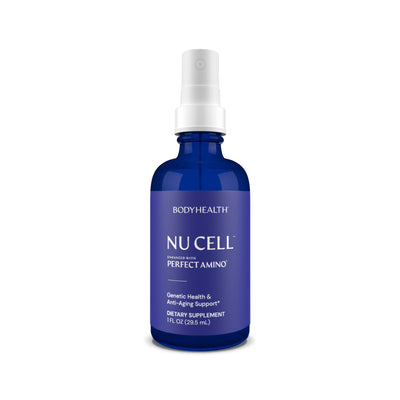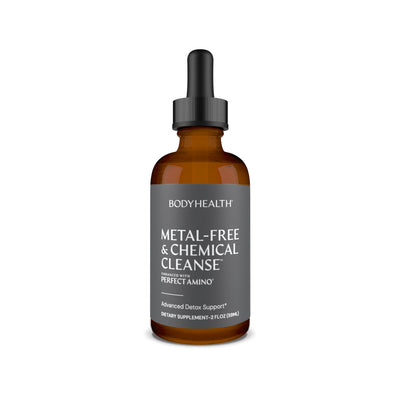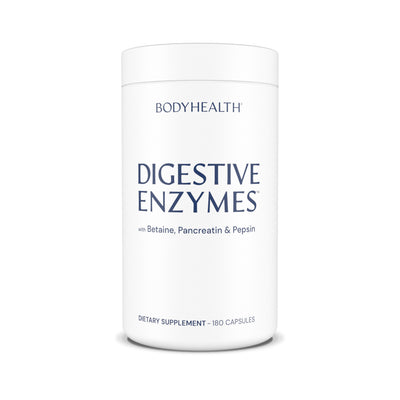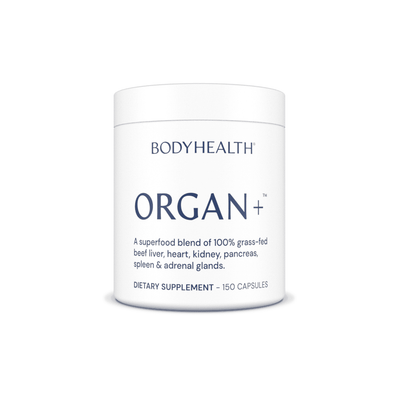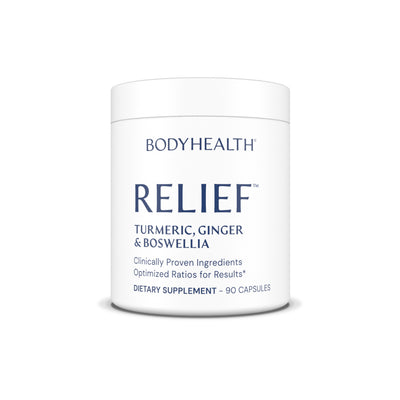Measuring Our DNA Health For Improved Longevity
May 29, 2025 7 min read

Did you know that factors such as diet, exercise, toxins, sleep, stress and more can affect how able our DNA are to make new, healthy cells?
This is a huge factor in aging.
If our DNA can't make new cells properly, but instead makes "faulty" cells, then, as our body is nothing but cells, over time our body begins to slowly degrade.
We see it in our skin, our strength, our energy levels and our overall health.
This is half of what we call "aging."
But it doesn't have to be this way. This is a created situation.
And we can reverse it.
STEM CELLS, DNA & AGING
As covered in this article, microscopic “tails” called telomeres exist in our stem cells, the cells that divide to make new cells when we add muscle or need to replace old or dying cells through use or injury.
And the telomeres shorten with each cell division that stem cell creates, until it can no longer divide to replace old or injured cells.
Thus, the length of these telomeres provide us with an idea of life expectancy, or our Biological Age vs our Chronological Age. Longer telomeres = more life left, shorter telomeres = less life left.
Even more, we covered how it’s actually possible to re-lengthen these telomeres again, increasing healthy longevity.
But there’s another aspect tied to this: our DNA and something called “gene expression.”
You see, these stem cells are unique. Every cell contains our genes, which contain our DNA — the full blueprints for every type of cell in our body. But only stem cells can use these to make new cells.
Because of this, the stem cells are not a specific type of cell, but instead, when they divide, the new cell formed can be any type of cell needed: bone, liver cell, skin cell, the white of your eye — anything.
And that’s where this other aspect of “gene expression” comes in.
Because, while the stem cell may contain the blueprint of every type of cell in the body — exactly how to make it — whether it does so correctly or not, or does so at all, is determined by gene expression — whether the instructions in the DNA blue prints are actually used “expressed” or not.
And this affects our biological age and health more than almost anything else.
HOW THE DNA IN STEM CELLS REPAIR YOUR BODY
There are a few words I want to clarify here before we begin:
DNA: The exact blueprints on how to build the human body — exactly. Every protein, every cell, everything.
Genes: Genes are made of short pieces or “sequences” of DNA that carry a specific part of the overall blueprint. Each DNA sequence that contains a message on how to make a specific protein (skin, muscle, bone, etc) is a gene.
Genome: The name given for the complete set of blueprints for the human body, made up of all genes containing all DNA sequences. Or, more specifically, for the DNA sequences passed on to you from your parents that say how to make your body.
Epigenome: Chemical compounds in your cells that change, or “mark”, the genome in a way that tells it what to do, where to do it, and when to do it. The epigenome is the foreman reading the blueprints and saying what structures to build based on them.
Let’s simplify this.
Think of an old record player. You have a record. It has very exact grooves. These grooves determine exactly what sounds will come out of it when played. Exactly.
The record is your genome. The grooves are your genes containing your DNA.
But without the needle on the record player, it’s just a disk. To get anything out of it, it needs to be played.
So you put the needle on the record, and it reads the sounds mapped into the grooves, the “DNA.”
The needle is the epigenome.
It turns the DNA blueprints in your genome into actual instructions which your cells can then follow to make new proteins.
Pretty much all your DNA does is say how to make any of the tens of thousands of proteins used in your body so it can function. Proteins don’t just make our cells, tissues and organs, they're also the chemical messengers that regulate nearly everything in our bodies.
So this is pretty important. When you take PerfectAmino, it’s these DNA sequences that say what to do with it, how to use it. Without them, we’d be lost. And that’s where the fun starts.
You see, the epigenome, this needle, isn’t like a normal record player needle. It picks which parts to play and which parts not to play.
It does this through chemical tags that turn on or turn off, “play” or “skip,” specific DNA sequences in the overall blueprints.
And this is fine. It’s supposed to be able to do that. It’s called “gene expression.”
This record isn’t for a specific part of your body. Each record in each stem cell has instructions for the whole body. So, when we need a specific new cell, which parts of the record are played, or “expressed,” and which aren’t, is determined by your epigenome.
Let’s give an example.
If you’ve just worked out, and injured cells in your muscles, your stem cells now need to divide to produce more muscle cells. And it’s the epigenome that oversees this.
If each stem cell contains the full blueprints on how to make any cell type, then obviously we need very specific instructions from this for the cell we need, and we don’t need the rest. Right?
If we’re making muscle cells, we don’t need instructions for bone cells, right? So those are turned off. We don’t need instructions for liver or kidney cells, or eyeball cells, or nerve cells. Right?
We just need the instructions to make these specific muscle cells. So your epigenome only plays the specific part of the record, the specific DNA sequences, necessary to make muscle cells.
It does this by putting chemical tags on the record. Specific proteins are made that put tags on the DNA sequences that are not needed, and other tags on the DNA sequences that are needed. These are called methyl tags, and the process of putting them on is called methylation.
So now the epigenome, the record needle, can “play” only the parts of the record it needs and thus make a perfect muscle cell.
But what happens when the record needle doesn’t do that? What happens when the record gets scratches?
OUR EPIGENOME: AGING, DIET & LIFESTYLE
So we know that our epigenome adds specific methyl tags to our DNA which determines which DNA sequences will or won’t be used to make any specific protein or cell.
But what if it starts adding methyl tags in the wrong places? Or doesn’t add them where it should?
Well, then the finished product, the new cell, won’t be exactly perfect. As it wasn’t made exactly following the instructions.
So it won’t be quite as efficient, or powerful, or operate exactly as we need. It will be “a bit off.”
But when we talk about the human body, we’re not talking about one cell, but trillions.
And if the epigenome is making mistakes, it's to much more than just one cell.
This is the other half of aging.
While telomeres measure the amount of times our stem cells can each make new cells (about 62 each), which tells us our approximate biological age based on how many more “cell divisions” we have left, Epigenetic Age (of the epigenome) tells us how old we are biologically based on how these methyl tags are being placed.
Are the methyl tags being placed correctly? Then we’re making good, healthy fully functional cells.
If they aren’t being placed correctly, then we’re making more and more not fully functional cells.
How much does this affect us? All that our body is is a huge conglomeration of cells. How well they are functioning is how well our body is functioning.
So what causes these faults in the record player?
Our diet, our lifestyle, the toxins that enter our body, the amino acids and nutrition we aren't taking into our body, and a host of other factors.
Because while your genome (your genes, DNA, passed onto you from your parents) is set and unalterable, the expression of those genes is not only alterable, but is altering throughout your entire life.
It’s altering based on what you eat, the toxins coming into your body, factors stressing you physically or mentally, sleep, drugs, nutrition, etc.
When we have a diet high in processed sugars, with toxins coming in through our food and water, not getting enough sleep, low protein levels… our epigenome becomes faulty, and this half of “aging” sets in.
This is one way someone who is thirty can look forty-five, or reversely, someone who is forty, can look thirty years old.
It’s all about the foods they did or didn’t eat, the toxins coming into their body, whether they exercise often or not, what are their sleep levels and stress levels, etc.
These factors are, every single day, changing gene expression throughout your body for better or worse.
But the best part: we can reverse this.
We can reverse it right now.
Adopting a healthy diet, high in protein and omega 3 fatty acids, and low in omega 6, free of toxins, being well hydrated, getting exercise, sleep and de-stressing, can actually help restore your epigenome so that it is functioning correctly again. Or at least much, much better.
In the next several articles we’ll cover all the ways to do this.
But key points are getting enough protein, getting rid of the processed sugars and foods, keeping your body as free of toxins as you can and removing the toxins that do enter, getting good sleep, lowering cortisol levels, exercising, and consuming high antioxidant and high phytonutrient foods and supplements.
If you start doing this, over the next few months you will notice a difference.
Articles by Health Topic
Your Path To Better Health Starts Here!
From in-depth articles on nutritional benefits to updates on new product launches, stay informed and inspired on your journey to optimal health.
*These statements have not been evaluated by the Food and Drug Administration. These products are not intended to diagnose, treat, cure, or prevent any disease.
